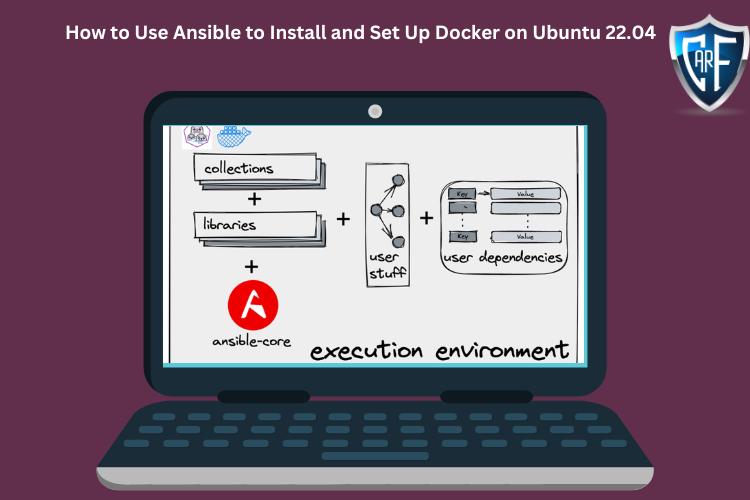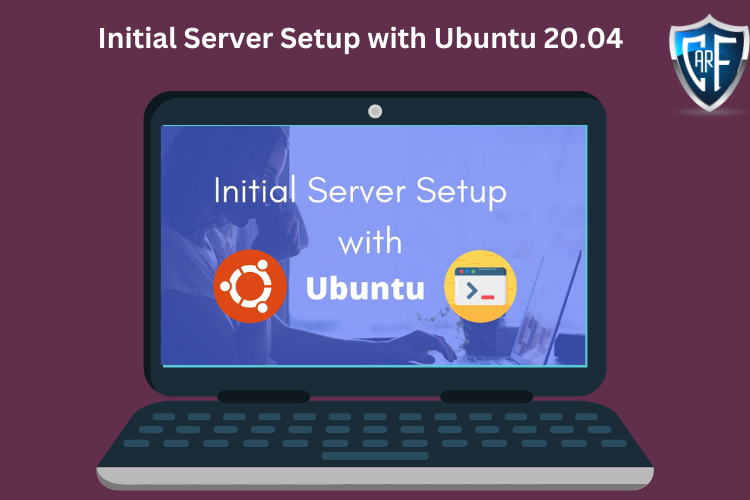IntroductionSSH, or secure shell, is an encrypted protocol used to administer and communicate with servers. When working with an Ubuntu server, chances are you will spend most of your time in a terminal session connected to your server through SSH.In this guide, we’ll focus on setting up SSH keys for an Ubuntu 20.04 installation. SSH keys provide a secure way of logging into your server and are recommended for all users.Step 1 — Creating the Key PairThe first step is to create a key pair on the client machine (usually your computer):ssh-keygen
CopyBy default recent versions of ssh-keygen will create a 3072-bit RSA key pair, which is secure enough for most use cases (you may optionally pass in the -b 4096 flag to create a larger 4096-bit key).After entering the command, you should see the following output:OutputGenerating public/private rsa key pair.
Enter file in which to save the key (/your_home/.ssh/id_rsa):
Press enter to save the key pair into the .ssh/ subdirectory in your home directory, or specify an alternate path.If you had previously generated an SSH key pair, you may see the following prompt:Output/home/your_home/.ssh/id_rsa already exists.
Overwrite (y/n)?
If you choose to overwrite the key on disk, you will not be able to authenticate using the previous key anymore. Be very careful when selecting yes, as this is a destructive process that cannot be reversed.You should then see the following prompt:OutputEnter passphrase (empty for no passphrase):
Here you optionally may enter a secure passphrase, which is highly recommended. A passphrase adds an additional layer of security to prevent unauthorized users from logging in. To learn more about security, consult our tutorial on How To Configure SSH Key-Based Authentication on a Linux Server.You should then see the output similar to the following:OutputYour identification has been saved in /your_home/.ssh/id_rsa
Your public key has been saved in /your_home/.ssh/id_rsa.pub
The key fingerprint is:
SHA256:/hk7MJ5n5aiqdfTVUZr+2Qt+qCiS7BIm5Iv0dxrc3ks user@host
The key's randomart image is:
+---[RSA 3072]----+
| .|
| + |
| + |
| . o . |
|o S . o |
| + o. .oo. .. .o|
|o = oooooEo+ ...o|
|.. o *o+=.*+o....|
| =+=ooB=o.... |
+----[SHA256]-----+
You now have a public and private key that you can use to authenticate. The next step is to place the public key on your server so that you can use SSH-key-based authentication to log in.Step 2 — Copying the Public Key to Your Ubuntu ServerThe quickest way to copy your public key to the Ubuntu host is to use a utility called ssh-copy-id. Due to its simplicity, this method is highly recommended if available. If you do not have ssh-copy-id available to you on your client machine, you may use one of the two alternate methods provided in this section (copying via password-based SSH, or manually copying the key).Copying the Public Key Using ssh-copy-idThe ssh-copy-id tool is included by default in many operating systems, so you may have it available on your local system. For this method to work, you must already have password-based SSH access to your server.To use the utility, you specify the remote host that you would like to connect to, and the user account that you have password-based SSH access to. This is the account to which your public SSH key will be copied.The syntax is:ssh-copy-id username@remote_host
CopyYou may see the following message:OutputThe authenticity of host '203.0.113.1 (203.0.113.1)' can't be established.
ECDSA key fingerprint is fd:fd:d4:f9:77:fe:73:84:e1:55:00:ad:d6:6d:22:fe.
Are you sure you want to continue connecting (yes/no)? yes
This means that your local computer does not recognize the remote host. This will happen the first time you connect to a new host. Type “yes” and press ENTER to continue.Next, the utility will scan your local account for the id_rsa.pub key that we created earlier. When it finds the key, it will prompt you for the password of the remote user’s account:Output/usr/bin/ssh-copy-id: INFO: attempting to log in with the new key(s), to filter out any that are already installed
/usr/bin/ssh-copy-id: INFO: 1 key(s) remain to be installed -- if you are prompted now it is to install the new keys
[email protected]'s password:
Type in the password (your typing will not be displayed, for security purposes) and press ENTER. The utility will connect to the account on the remote host using the password you provided. It will then copy the contents of your ~/.ssh/id_rsa.pub key into a file in the remote account’s home ~/.ssh directory called authorized_keys.You should see the following output:OutputNumber of key(s) added: 1
Now try logging into the machine, with: "ssh '[email protected]'"
and check to make sure that only the key(s) you wanted were added.
At this point, your id_rsa.pub key has been uploaded to the remote account. You can continue on to Step 3.Copying the Public Key Using SSHIf you do not have ssh-copy-id available, but you have password-based SSH access to an account on your server, you can upload your keys using a conventional SSH method.We can do this by using the cat command to read the contents of the public SSH key on our local computer and piping that through an SSH connection to the remote server.On the other side, we can make sure that the ~/.ssh directory exists and has the correct permissions under the account we’re using.We can then output the content we piped over into a file called authorized_keys within this directory. We’ll use the >> redirect symbol to append the content instead of overwriting it. This will let us add keys without destroying previously added keys.The full command looks like this:cat ~/.ssh/id_rsa.pub | ssh username@remote_host "mkdir -p ~/.ssh && touch ~/.ssh/authorized_keys && chmod -R go= ~/.ssh && cat >> ~/.ssh/authorized_keys"
CopyYou may see the following message:OutputThe authenticity of host '203.0.113.1 (203.0.113.1)' can't be established.
ECDSA key fingerprint is fd:fd:d4:f9:77:fe:73:84:e1:55:00:ad:d6:6d:22:fe.
Are you sure you want to continue connecting (yes/no)? yes
This means that your local computer does not recognize the remote host. This will happen the first time you connect to a new host. Type yes and press ENTER to continue.Afterwards, you should be prompted to enter the remote user account password:[email protected]'s password:
After entering your password, the content of your id_rsa.pub key will be copied to the end of the authorized_keys file of the remote user’s account. Continue on to Step 3 if this was successful.Copying the Public Key ManuallyIf you do not have password-based SSH access to your server available, you will have to complete the above process manually.We will manually append the content of your id_rsa.pub file to the ~/.ssh/authorized_keys file on your remote machine.To display the content of your id_rsa.pub key, type this into your local computer:cat ~/.ssh/id_rsa.pub
CopyYou will see the key’s content, which should look something like this:Outputssh-rsa AAAAB3NzaC1yc2EAAAADAQABAAACAQCqql6MzstZYh1TmWWv11q5O3pISj2ZFl9HgH1JLknLLx44+tXfJ7mIrKNxOOwxIxvcBF8PXSYvobFYEZjGIVCEAjrUzLiIxbyCoxVyle7Q+bqgZ8SeeM8wzytsY+dVGcBxF6N4JS+zVk5eMcV385gG3Y6ON3EG112n6d+SMXY0OEBIcO6x+PnUSGHrSgpBgX7Ks1r7xqFa7heJLLt2wWwkARptX7udSq05paBhcpB0pHtA1Rfz3K2B+ZVIpSDfki9UVKzT8JUmwW6NNzSgxUfQHGwnW7kj4jp4AT0VZk3ADw497M2G/12N0PPB5CnhHf7ovgy6nL1ikrygTKRFmNZISvAcywB9GVqNAVE+ZHDSCuURNsAInVzgYo9xgJDW8wUw2o8U77+xiFxgI5QSZX3Iq7YLMgeksaO4rBJEa54k8m5wEiEE1nUhLuJ0X/vh2xPff6SQ1BL/zkOhvJCACK6Vb15mDOeCSq54Cr7kvS46itMosi/uS66+PujOO+xt/2FWYepz6ZlN70bRly57Q06J+ZJoc9FfBCbCyYH7U/ASsmY095ywPsBo1XQ9PqhnN1/YOorJ068foQDNVpm146mUpILVxmq41Cj55YKHEazXGsdBIbXWhcrRf4G2fJLRcGUr9q8/lERo9oxRm5JFX6TCmj6kmiFqv+Ow9gI0x8GvaQ== demo@test
Access your remote host using whichever method you have available.Once you have access to your account on the remote server, you should make sure the ~/.ssh directory exists. This command will create the directory if necessary, or do nothing if it already exists:mkdir -p ~/.ssh
CopyNow, you can create or modify the authorized_keys file within this directory. You can add the contents of your id_rsa.pub file to the end of the authorized_keys file, creating it if necessary, using this command:echo public_key_string >> ~/.ssh/authorized_keys
CopyIn the above command, substitute the public_key_string with the output from the cat ~/.ssh/id_rsa.pub command that you executed on your local system. It should start with ssh-rsa AAAA....Finally, we’ll ensure that the ~/.ssh directory and authorized_keys file have the appropriate permissions set:chmod -R go= ~/.ssh
CopyThis recursively removes all “group” and “other” permissions for the ~/.ssh/ directory.If you’re using the root account to set up keys for a user account, it’s also important that the ~/.ssh directory belongs to the user and not to root:chown -R sammy:sammy ~/.ssh
CopyIn this tutorial our user is named sammy but you should substitute the appropriate username into the above command.We can now attempt passwordless authentication with our Ubuntu server.Step 3 — Authenticating to Your Ubuntu Server Using SSH KeysIf you have successfully completed one of the procedures above, you should be able to log into the remote host without providing the remote account’s password.The basic process is the same:ssh username@remote_host
CopyIf this is your first time connecting to this host (if you used the last method above), you may see something like this:OutputThe authenticity of host '203.0.113.1 (203.0.113.1)' can't be established.
ECDSA key fingerprint is fd:fd:d4:f9:77:fe:73:84:e1:55:00:ad:d6:6d:22:fe.
Are you sure you want to continue connecting (yes/no)? yes
This means that your local computer does not recognize the remote host. Type “yes” and then press ENTER to continue.If you did not supply a passphrase for your private key, you will be logged in immediately. If you supplied a passphrase for the private key when you created the key, you will be prompted to enter it now (note that your keystrokes will not display in the terminal session for security). After authenticating, a new shell session should open for you with the configured account on the Ubuntu server.If key-based authentication was successful, continue on to learn how to further secure your system by disabling password authentication.Step 4 — Disabling Password Authentication on Your ServerIf you were able to log into your account using SSH without a password, you have successfully configured SSH-key-based authentication to your account. However, your password-based authentication mechanism is still active, meaning that your server is still exposed to brute-force attacks.Before completing the steps in this section, make sure that you either have SSH-key-based authentication configured for the root account on this server, or preferably, that you have SSH-key-based authentication configured for a non-root account on this server with sudo privileges. This step will lock down password-based logins, so ensuring that you will still be able to get administrative access is crucial.Once you’ve confirmed that your remote account has administrative privileges, log into your remote server with SSH keys, either as root or with an account with sudo privileges. Then, open up the SSH daemon’s configuration file:sudo nano /etc/ssh/sshd_config
CopyInside the file, search for a directive called PasswordAuthentication. This line may be commented out with a # at the beginning of the line. Uncomment the line by removing the #, and set the value to no. This will disable your ability to log in via SSH using account passwords:/etc/ssh/sshd_config. . .
PasswordAuthentication no
. . .
Save and close the file when you are finished by pressing CTRL+X, then Y to confirm saving the file, and finally ENTER to exit nano. To actually activate these changes, we need to restart the sshd service:sudo systemctl restart ssh
CopyAs a precaution, open up a new terminal window and test that the SSH service is functioning correctly before closing your current session:ssh username@remote_host
CopyOnce you have verified your SSH service is functioning properly, you can safely close all current server sessions.The SSH daemon on your Ubuntu server now only responds to SSH-key-based authentication. Password-based logins have been disabled.ConclusionYou should now have SSH-key-based authentication configured on your server, allowing you to sign in without providing an account password.
Read More

.png)




